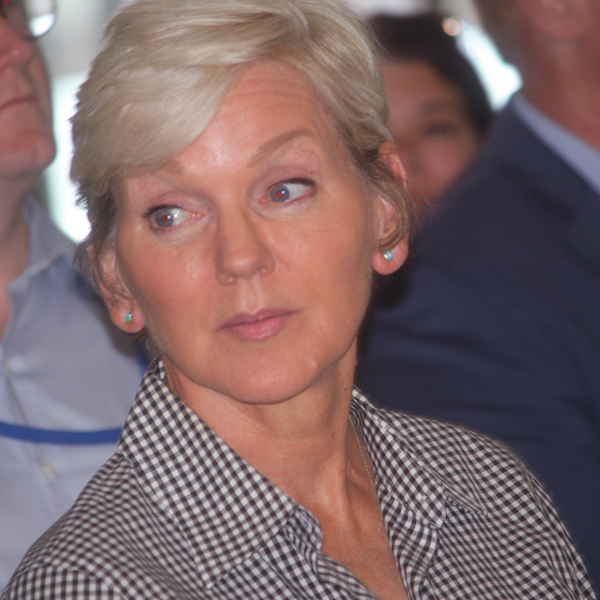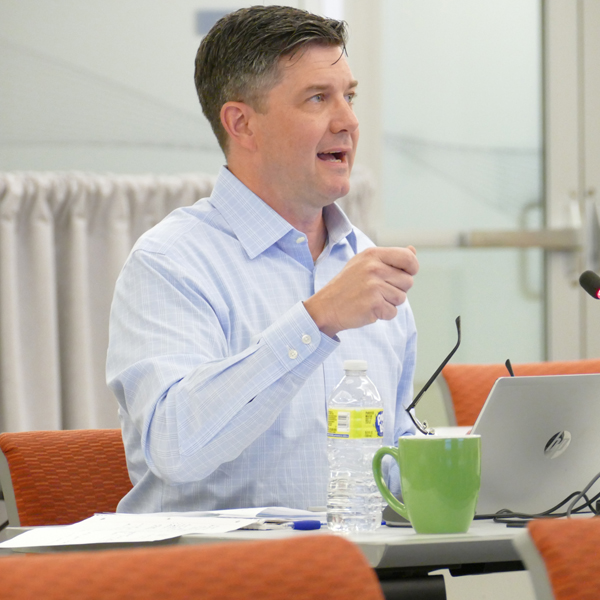AUSTIN, Texas — ERCOT announced Tuesday that it has selected Pablo Vegas, a senior executive with Indiana-based utility NiSource, as its next CEO.
Vegas, currently an executive vice president with the company and group president of NiSource Utilities, will join the Texas grid operator on Oct. 1. He will replace interim CEO Brad Jones, whose 90-day temporary gig has stretched into a 16-month assignment.
The announcement came during the Board of Directors’ bimonthly meeting and was quickly ratified by the Texas Public Utility Commission.
Vegas will be expected to guide ERCOT as it continues to make changes following the February 2021 winter storm that nearly brought the Texas Interconnection to its knees. A massive loss of generation led to dayslong outages that resulted in hundreds of deaths and billions of dollars in damages.
 Pablo Vegas, NiSource | NiSource
Pablo Vegas, NiSource | NiSource“With Pablo, we’re getting the leader we’ve been looking for: extensive experience with regulated utilities; a demonstrated record of managing a system of diverse energy resources; and most importantly, unwavering commitment to reliability,” board Chair Paul Foster said after breaking the news. “With this unanimous vote, it is clear that this board believes we have found an exceptional executive who can successfully lead this organization.”
The board approved Vegas’ selection and compensation package during an executive session Monday. The announcement was made at the start of the board meeting Tuesday as it became apparent to the directors that the news had been leaking out and represented “a risk to the [employment] agreement.” One market insider said they had first heard Vegas’ name last Thursday.
NiSource is one of the largest fully regulated utility companies in the U.S., serving approximately 3.2 million natural gas customers and 500,000 electric customers across six states through its Columbia Gas and Northern Indiana Public Service Co. brands.
Vegas, who was only promoted to his present position on July 1, signed his contract Monday. He was not in Austin on Tuesday or available for comment. ERCOT directors and staff declined to comment.
“I’m excited to return to Texas both personally and professionally,” Vegas said in a statement. “This is a once-in-a-lifetime opportunity to lead an exceptional organization of people and make a positive impact on millions of Texans.”
Before joining NiSource in 2016, Vegas spent 11 years with American Electric Power. He served as president and COO of both AEP Texas, for two years, and AEP Ohio. Vegas has a bachelor’s degree in mechanical engineering from the University of Michigan and held senior leadership positions with Andersen Consulting and other firms before joining the utility industry.
Judith Talavera, who currently holds Vegas’ titles for AEP Texas, said his time in the state “gives him a unique understanding” about the ERCOT system’s strengths and weaknesses.
“His experience in Texas and his leadership positions at AEP Ohio and NiSource will serve him well in his new role as ERCOT CEO. We look forward to working with him,” Talavera said in an email to RTO Insider.
“It doesn’t hurt that this isn’t his first rodeo in Texas,” Foster told the board. “Pablo knows our current market; he knows the incredible progress we’ve made in the last year implementing landmark reforms; and he knows how to turn the challenges we face into opportunities to strengthen the competitive market in Texas.”
“He has been an invaluable member of our leadership team, and I along with the entire NiSource community will miss working with Pablo, and we wish him the best in his new role at ERCOT,” NiSource CEO Lloyd Yates said in a press release.
Vegas’ hiring comes after several sources told a Texas newspaper that Gov. Greg Abbott stepped in to reject an earlier selection of former CAISO CEO Steve Berberich. (See ERCOT Could Name New CEO this Week.)
According to his employment contract, Vegas will earn a base salary of $990,000 and a one-time lump sum payment of $247,500 on or before Dec. 31. He will also receive make-whole payments of $6.68 million through 2027, when his contract ends. Beginning next year, Vegas will be eligible for incentive payments that could equal his base salary, assuming he meets key performance indicators.
Former ERCOT CEO Bill Magness, who was fired in March 2021 following the winter storm, disclosed during testimony before the Texas Legislature last year that his annual salary was $803,000. Jones’ annual salary is $500,000, and he is a due a one-time lump sum of $169,640 when he receives his final paycheck.
South Texas Electric Cooperative’s Clif Lange, chair of ERCOT’s Technical Advisory Committee, said the group looks forward to working closely with Vegas when he takes over.
“He faces some very big challenges as he transitions into the role, with a number of initiatives already started but with many still ahead,” he said, referring to the second phase of ERCOT’s market design. “I’m optimistic that he’ll be able to lead ERCOT successfully in implementing those.”
Director Bill Flores led the selection committee in what was termed an “exhaustive” nationwide search. He said the group identified 107 candidates and interviewed 21.
The directors, ERCOT staff and stakeholders saluted Jones with a standing ovation after the announcement was made.
“Twenty-six million Texans owe you a real debt of gratitude for everything you and the team have done to persevere through the challenges faced with record heat and cold winters,” Flores said.
A smiling Jones pointed to his grin as he greeted well-wishers during the meeting’s first break. He will spend October helping Vegas transition into his new position before resuming a retirement that was interrupted by the winter storm.
“Brad stepped in as our interim CEO during a very challenging time and was unquestionably the leader ERCOT needed at a most difficult time,” Foster said. “He’s also stayed much longer than originally anticipated.”
“Hopefully, his next endeavor includes an enjoyable and relaxing retirement, although I will bet that he will remain engaged in the electric industry. It’s in his blood,” Lange said. “He’s faced a monumental task in overseeing a significant overhaul of ERCOT’s priorities, and while it’s not always been popular, he’s been very successful in navigating those changes.”


